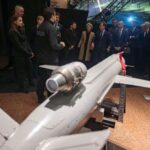
The U.S. Air Force acquisition office finished its acquisition strategy for the Next-Generation Air Dominance (NGAD) program last week, and the service is trying to build support for the program in the Pentagon for inclusion in the service's FY '22 budget plan, Air Force acquisition chief Will Roper said on Aug. 7. "I'm very pleased with the results [of the acquisition strategy]," he told reporters. "The work I have to do now that I have the strategy is sell it…














